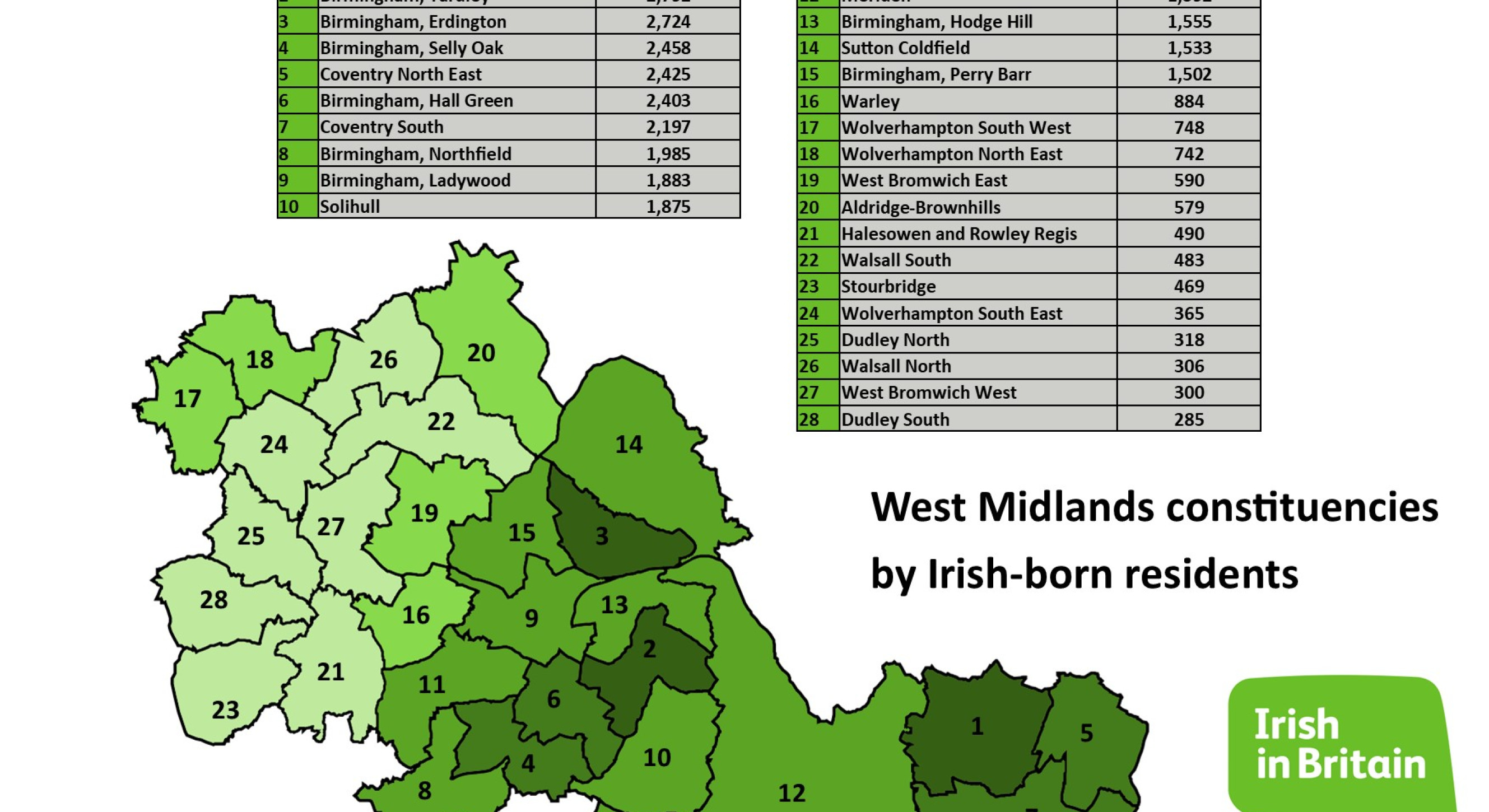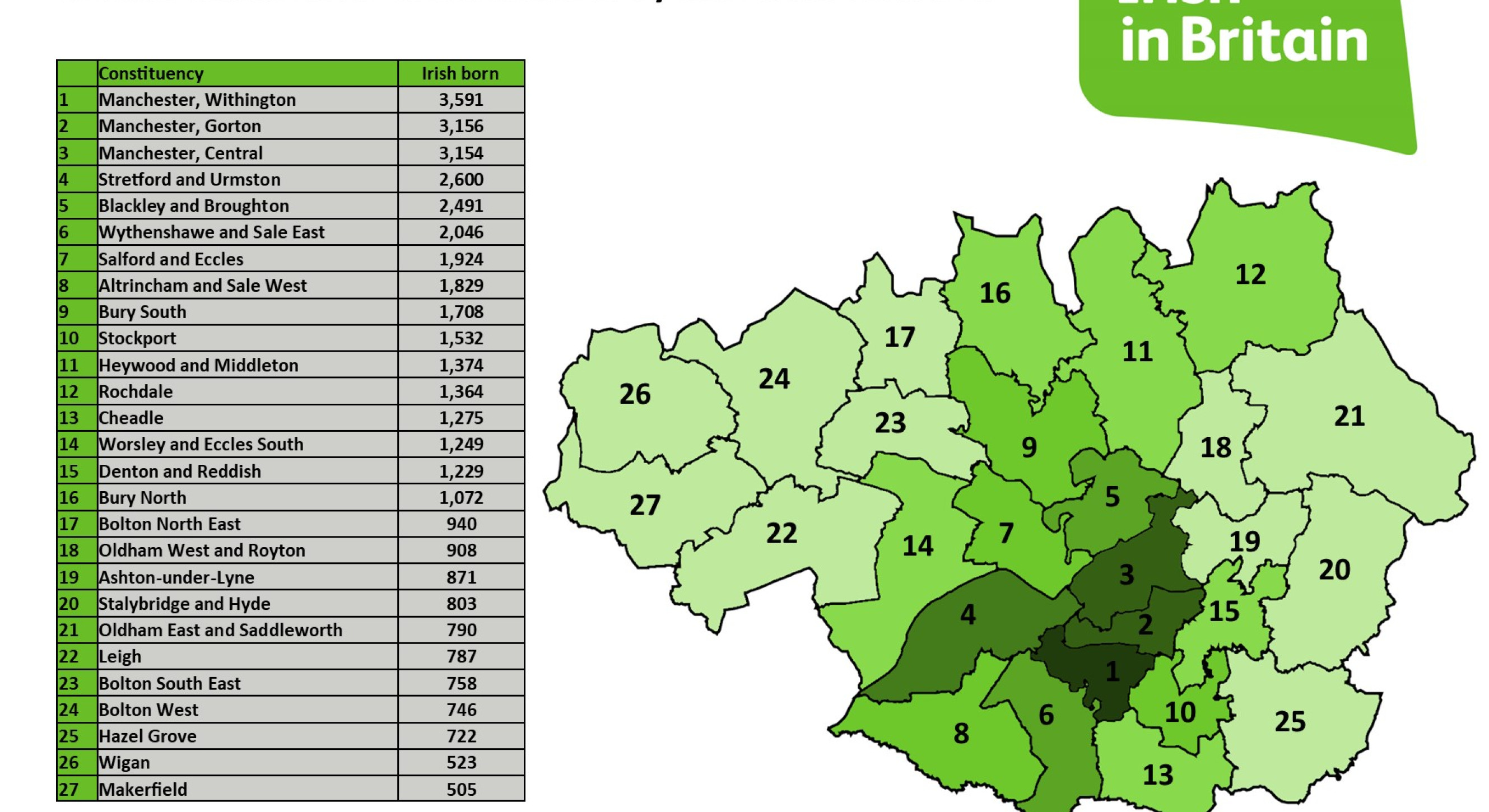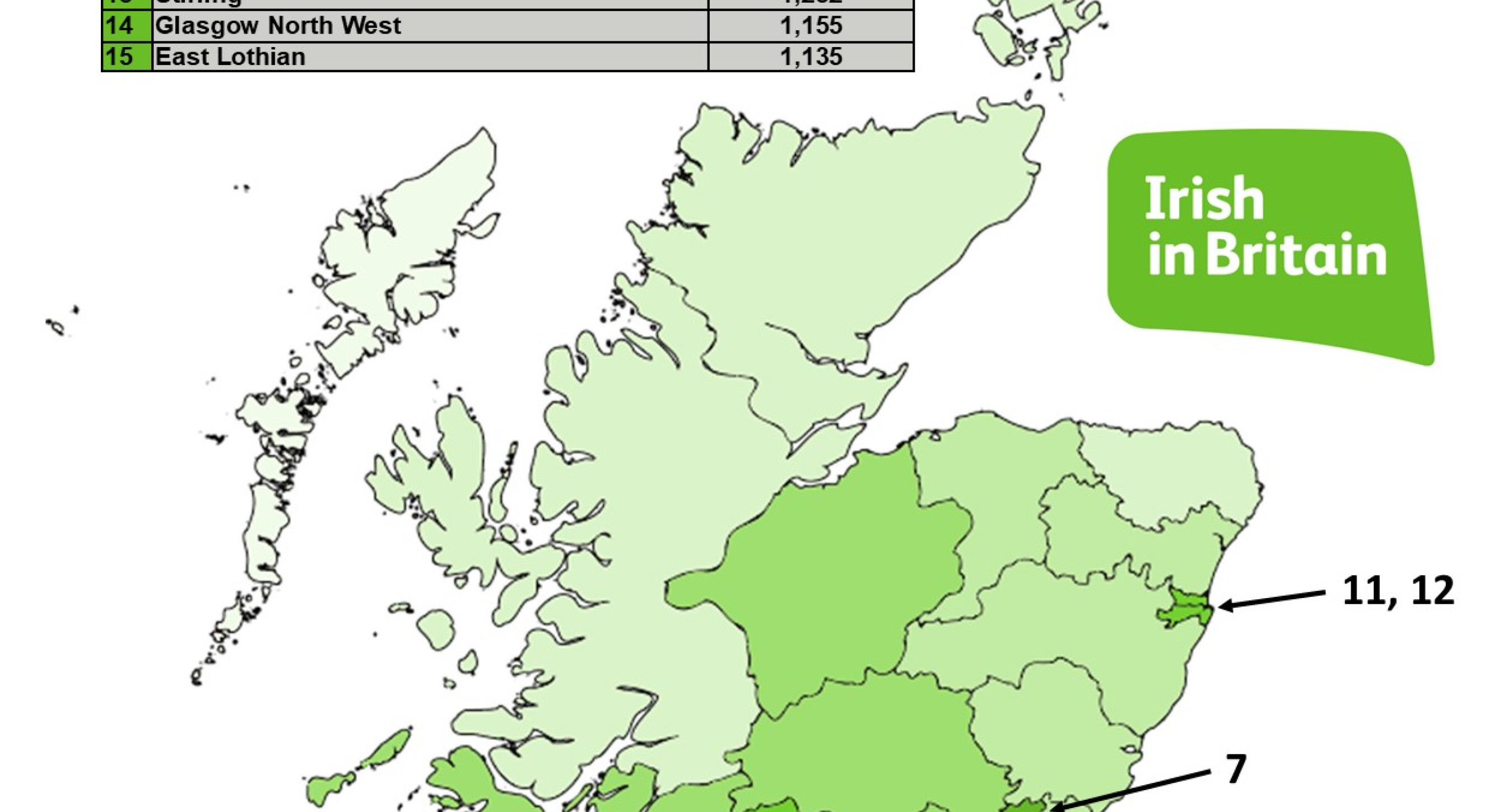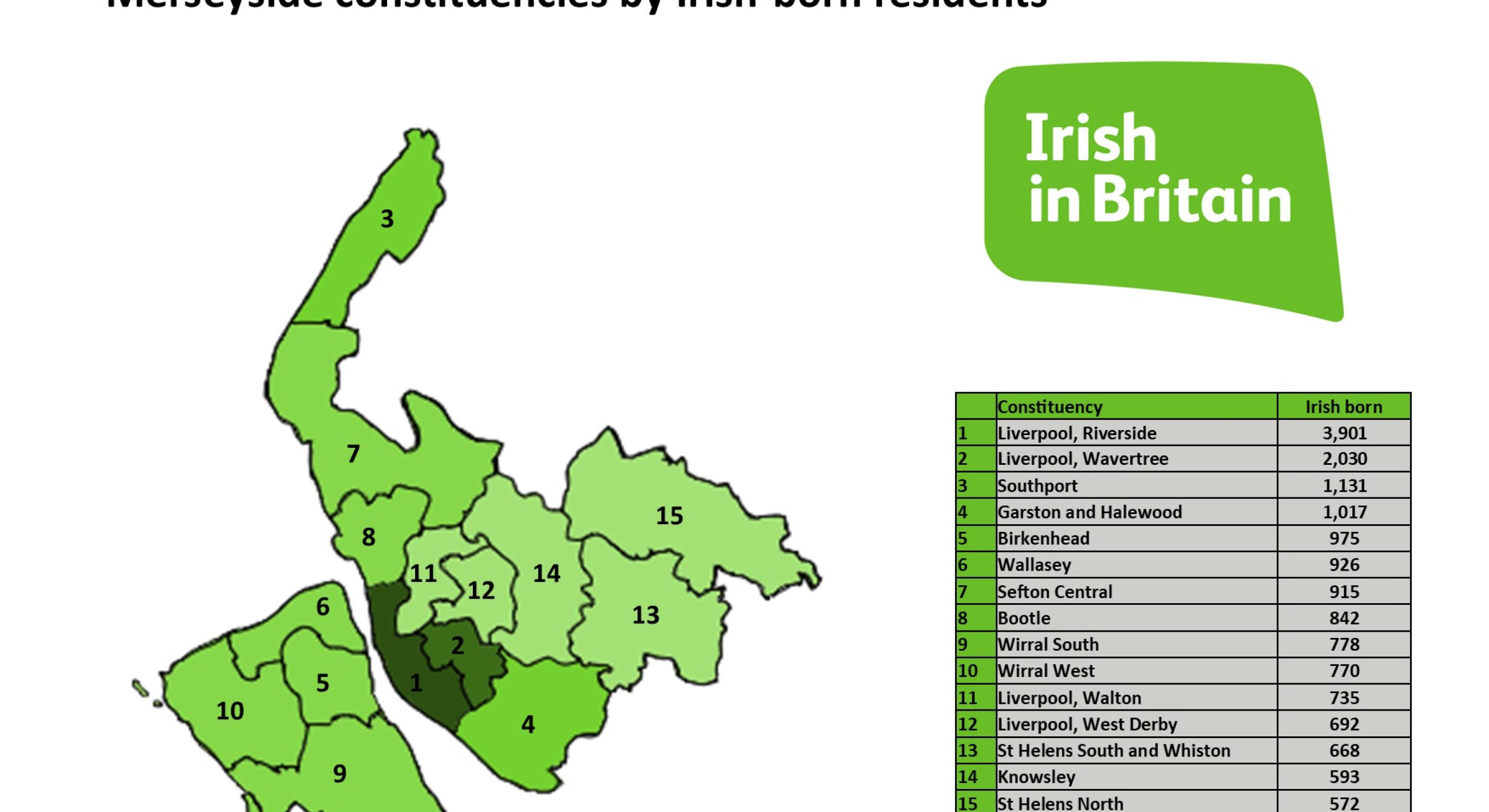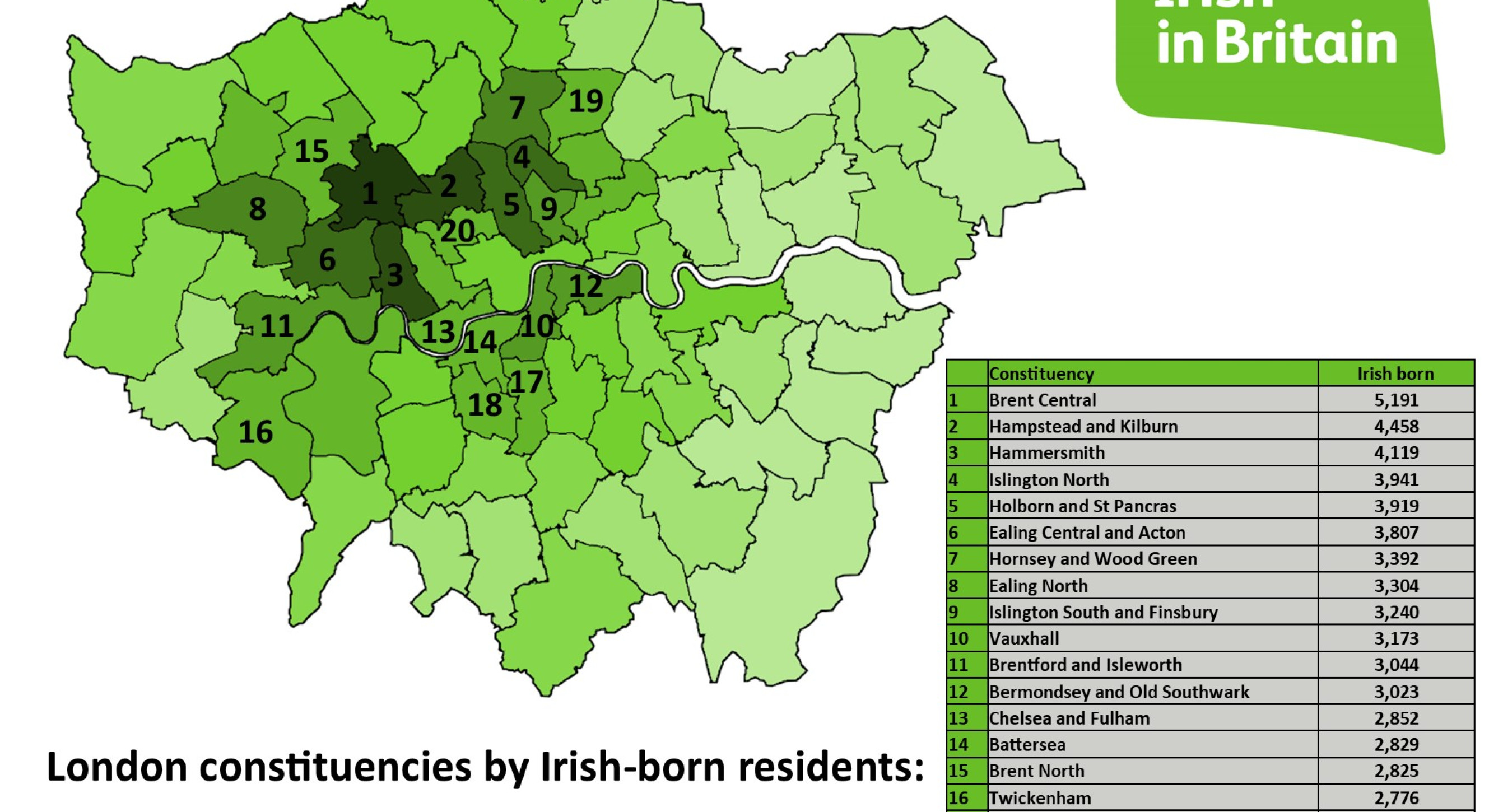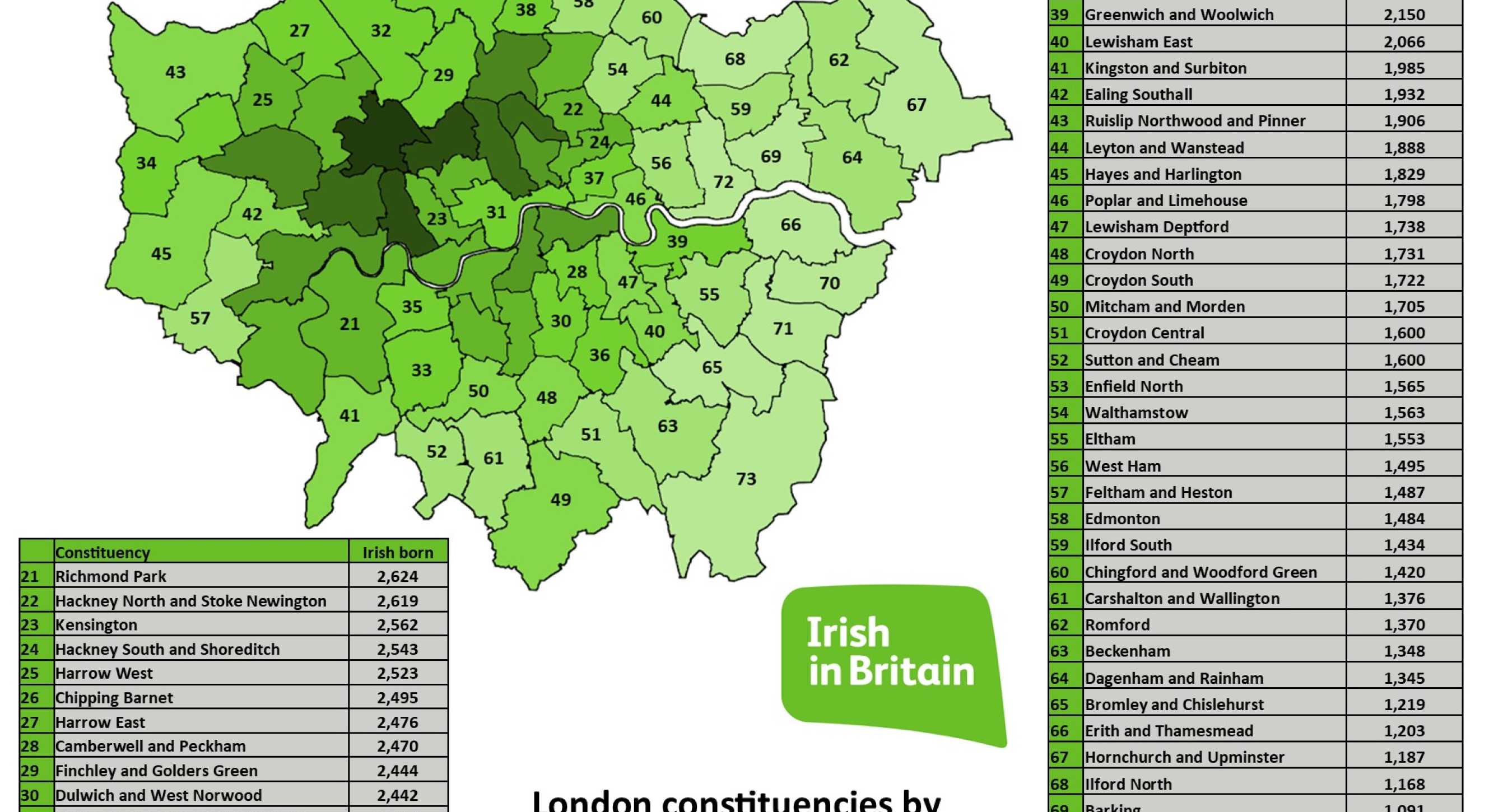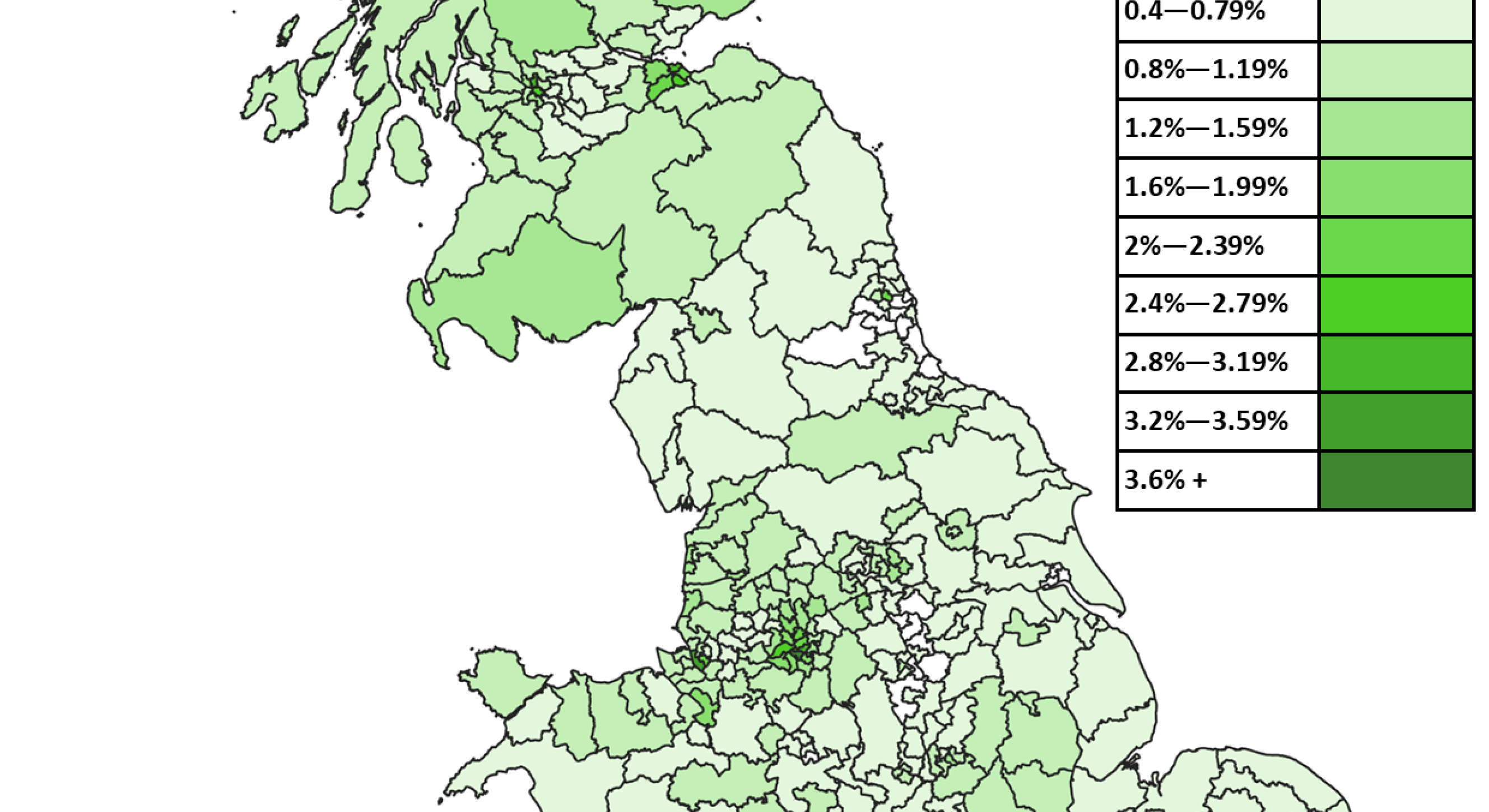To follow on from our Top 100 constituencies with the most Irish–born residents, this project – Mapping the Irish – shows regional Irish populations. Click on View Gallery above for the images of the areas.
Taken from the 2011 census, this data details those born on the island of Ireland in several parts of Britain: the West Midlands, Greater Manchester, Scotland, Merseyside and London.
It also includes a heat map of Britain by the percentage of Irish–born in each constituency. Islington North has the highest percentage at 3.8%. The national figure is 1.1%.
The figures highlight the dense Irish populations in cities like Coventry, Birmingham, Liverpool and Manchester. In Scotland, there are high numbers in Edinburgh, Glasgow and Dundee. In London, the Irish are very prominent in places like Ealing and Kilburn in the west and north, but other areas are very well represented like Bermondsey and Tooting in the south, as well as Wood Green and Tottenham in the north.
The numbers on the graphic for Merseyside may appear low as they do not account for historic migration to the area from Ireland. Many people in the area feel a close connection with Ireland even if their ancestral ties are from several generations back. Despite this, Liverpool Riverside and Wavertree are still home to thousands of Irish people – with many studying at the city’s universities.
There are a number of ways to quantify the Irish community in Britain and these figures and images offer just one approach.
An alternative method of mapping the data is to look at those who identified as White Irish in the last census. The total number was lower than those born in Ireland: 585,000 versus 681,000. However, in many areas with high numbers of Irish born those who identified as White Irish were higher than those born in Ireland. Brent Central in London had 5,191 Irish born but 6,548 identified as White Irish.
In other areas with strong historic ties to Ireland but low recent migration, such as Coatbridge on the outskirts of Glasgow, the number identifying as Irish was sometimes much higher than those born on the island. Coatbridge’s constituency had only 606 Irish born, yet 1,923 identified as White Irish.
The Federation of Irish Societies, renamed Irish in Britain in 2013, successfully campaigned for the Irish category to be included in the 2001 census.
Ultimately, these figures only give a taster of the profile of Britain’s Irish community, which is not restricted to place of birth or ethnic identity.
A study by Professor Bronwen Walter in the 2000s argued that the Irish community in an area could be estimated by multiplying the Irish–born by three and a half in order to include second and third–generation members. This amplifies the size of the community into the millions. A BBC piece in 2016 estimated that at least six million people in Britain who do not have an Irish passport may be entitled to one.
Howsoever the Irish community is defined, Irish in Britain is an inclusive and progressive network for all who come from, identify with or are interested in Ireland.
These figures highlight that we are a sizeable constituency throughout Britain. Issues such as Brexit and new spending priorities are deeply important to the Irish community and it is crucial that the voice of the Irish community is heard on 12 December.
You can access our election resources here.
